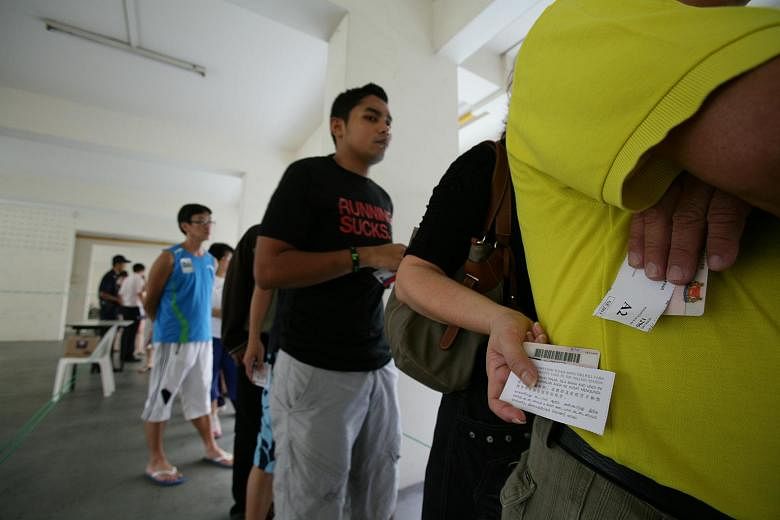SINGAPORE - The Elections Department has announced that changes have been made to several polling districts.
A 48-page notification in the electronic edition of the Government Gazette on Tuesday outlined details of the changes to boundaries of polling districts in eight group representation constituencies (GRCs): Chua Chu Kang, East Coast, Jurong, Moulmein-Kallang, Nee Soon, Pasir-Ris Punggol, Sembawang and Tanjong Pagar.
Among them, Pasir-Ris Punggol has the largest number of polling districts at 72, and Moulmein-Kallang the smallest with 35.
The notification has raised expectations that changes to constituency boundaries are imminent.
What is a polling district?
A polling district is a sub-division within a constituency, and each polling district will have its own polling station.
Changes to polling districts have been made to ensure that no polling station handles too many or too few voters.
There have been, on average, between 2,500 and 3,500 voters per polling district.
Under the Parliamentary Elections Act, the Registration Officer may alter the sub-divisions of polling districts within a constituency, and these changes must be announced in the Gazette.
The last time changes to polling districts were announced was in February 2015.
The latest notice has raised expectations that changes to electoral boundaries may be announced soon.
Changes to such boundaries, determined by a committee of civil servants, have traditionally been made by moving polling districts from one constituency to another, or to form a new constituency.
Do these changes mean new electoral boundaries will be out soon?
Changes to polling districts ahead of a general election are generally seen as a prelude to the release of the electoral boundaries review committee (EBRC) report, though the time-lag between them varies widely.
In 2011, changes to polling districts were announced on Jan 7, and the boundaries report was released on Feb 24, over a month later. The election was on May 7.
In 2006, changes to polling districts were announced on Jan 9, and the boundaries report was released on March 3. The election was on May 6.
However, in 2001, changes to polling districts were announced on Sept 27, with the boundaries report out on Oct 17. Parliament was dissolved the next day with the election on Nov 3.
Last week, Prime Minister Lee Hsien Loong revealed in Parliament that the EBRC had been formed two months ago - a sign that the next General Election, which must be held by January 2017, is not too far away.
Political watcher Eugene Tan of the Singapore Management University tells The Straits Times: "I think the EBRC would use this latest update in their review of the boundaries as this gives the most accurate information, granular data, in terms of how many votes there are within a particular location."

